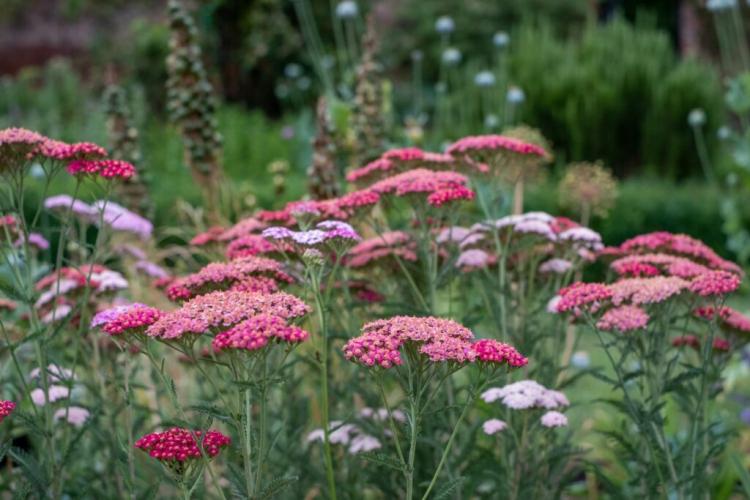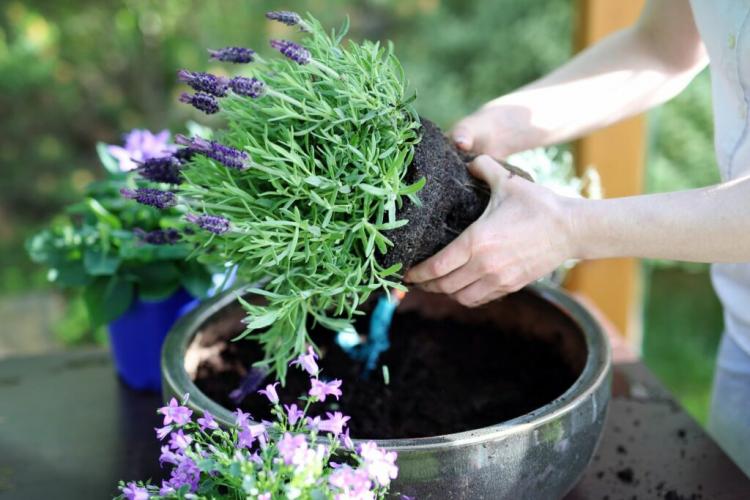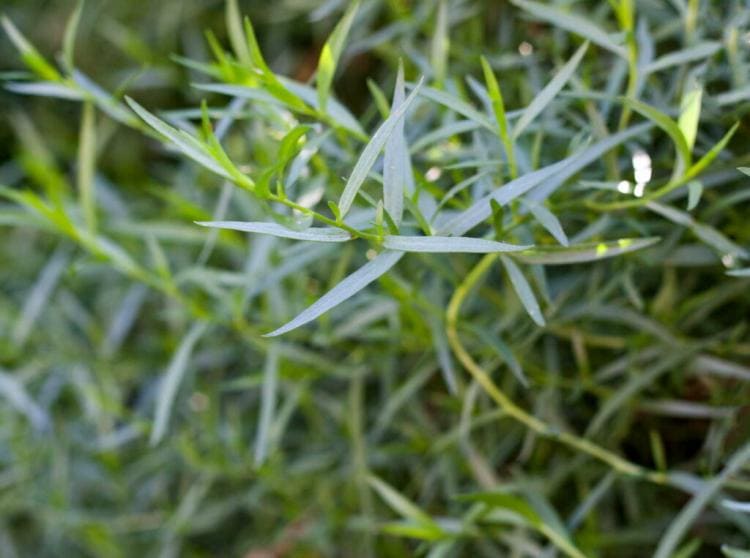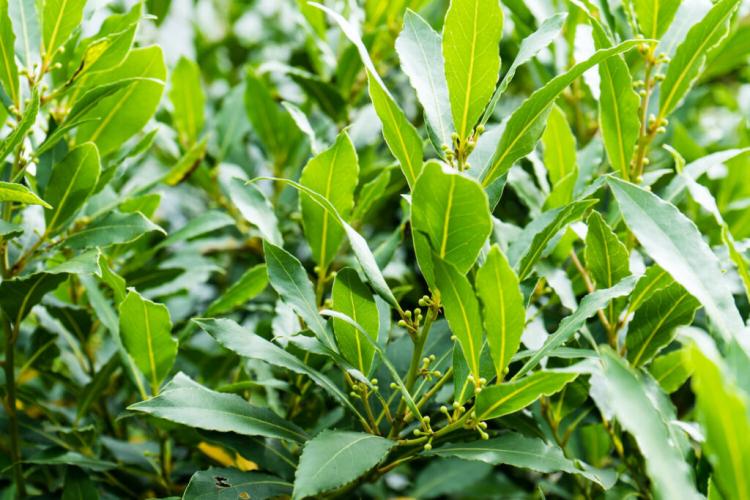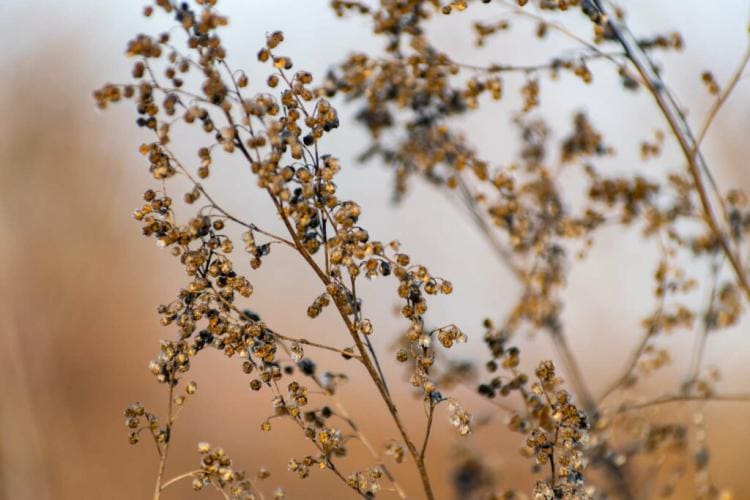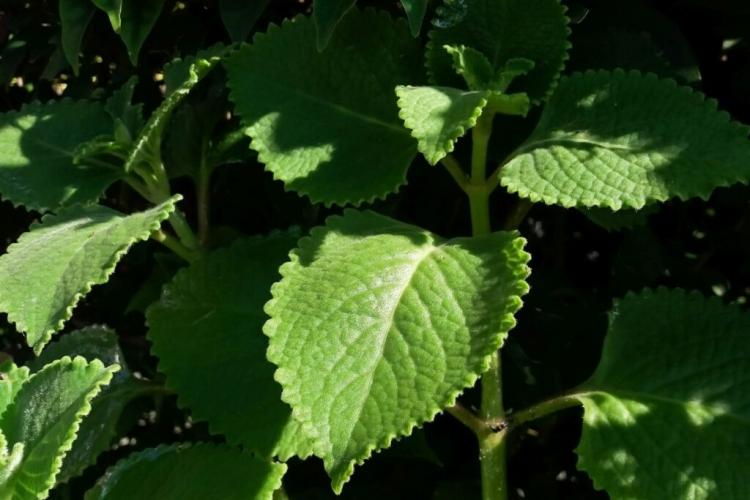Fertilizing petunias: when, how & with what?
As a heavy eater, the petunia needs a lot of nutrients. We show when and how to properly fertilize petunias with household remedies and the like.
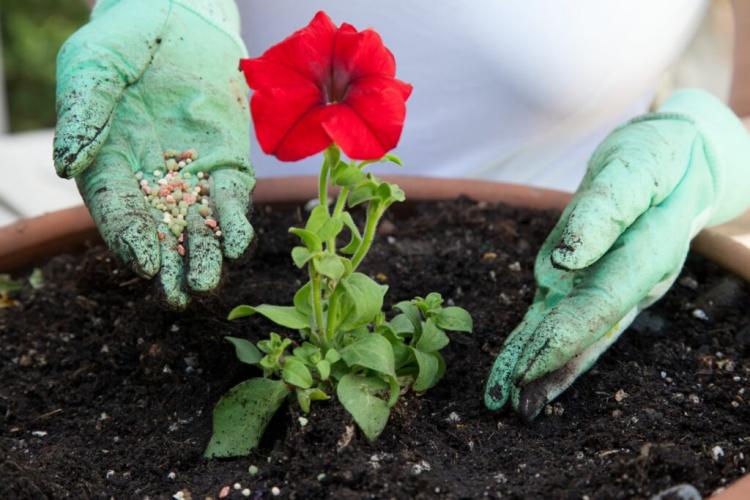
Petunias need sufficient nutrients to produce many flowers [Photo: Bochkarev Photography / Shutterstock.com]
Luminous petunias ( Petunia ) with their numerous, funnel-shaped flowers are often found in domestic gardens and on balconies. The nightshade family ( Solanaceae ) originally come from South America, where they like to colonize rocky slopes. There are different types of standing and hanging petunias that are suitable for both beds and pots. What they all have in common is that they are relatively undemanding and robust in terms of care. However, if you want to enjoy many, colorful flowers, you should regularly supply your petunias with nutrients. In this article, we will show you how you can optimally support your petunias in their development with the right fertilization and thus achieve maximum performance.
Petunias are characterized by their vigorous growth and for this they have to absorb a lot of nutrients from the soil. Appropriate fertilization is therefore very important. With favorable weather conditions and the right care, your petunias will delight you with their bloom until autumn. We explain below when and with what best to fertilize your petunias in beds and pots.
When are petunias fertilized?
Table of Contents
A needs-based fertilization of petunias begins with planting. Basically, the small summer bloomers prefer sunny locations with slightly acidic soils (pH value from 5.5 to 6). In order to provide the plant with good starting conditions, it is best to add some rich compost or potting soil to the planting hole when you plant it (in mid-May). In addition, you should ensure that there is sufficient plant spacing (at least 15 centimeters) so that there is no competition for space and nutrients. In addition, when planting petunias, you can also work a long-term fertilizer into the soil. It is best to use fertilizers with an organic long-term effect such as our Plantura organic flower fertilizer. This is particularly environmentally friendly for people, plants and animals in the garden.
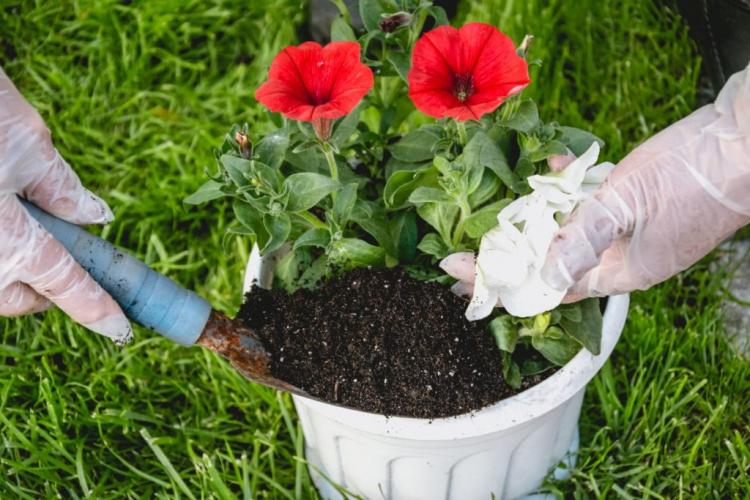
Some fertilizer can already be worked into the soil when planting [Photo: Konoplytska / Shutterstock.com]
In general, petunias enjoy regular fertilization from May to October. As an alternative to slow-release fertilizers, at the beginning of the growing season you can use the irrigation water to administer a liquid fertilizer with a high phosphorus content, which provides your petunias with sufficient nutrients. Then, during flowering, you can fertilize every two weeks or even weekly to help the plant bloom abundantly and for a long time. Most petunias are only grown as an annual and then migrate to the compost in autumn. With a little effort, however, you can easily get your petunias through the winter. You can find more information about wintering petunias here. With regard to the supply of nutrients, you should note that there is no fertilization during winter dormancy (September to February). The old substrate is only exchanged for a new one in spring (March) and when the petunias migrate back into the bed in mid-May, fertilization can be done again.
One aspect that should also be considered right from the start is that the vigorous petunias often suffer from iron deficiency, for example if they are regularly watered with lime-rich water and the pH value in the soil rises as a result. In the worst case, the leaves turn yellow and only show green leaf veins. Even when planting, you can counteract such an iron deficiency by using a special petunia soil. If necessary, you can also give iron fertilizer or an iron-containing petunia fertilizer.
When are petunias fertilized?
- Put compost or potting soil in the planting hole
- Incorporate fertilizer with long-term organic effects
- Alternatively, give liquid fertilizer first monthly, then weekly
- Do not fertilize during hibernation
- Swap old substrate for fresh one in spring
- Counteract iron deficiency with special petunia soil
- Apply iron fertilizer if necessary
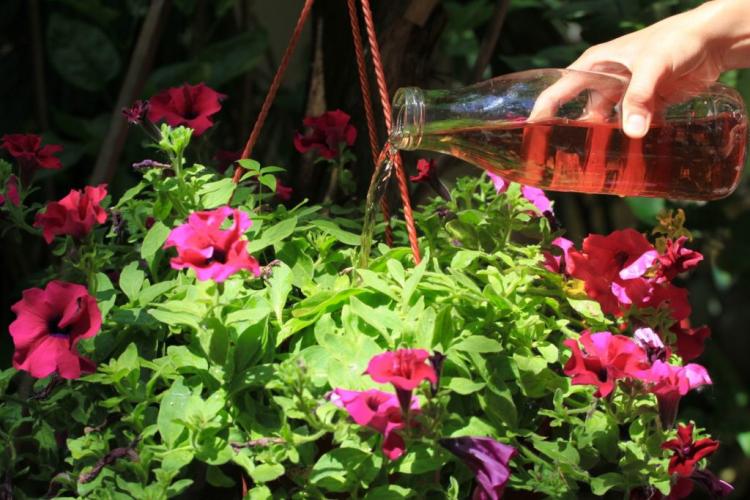
Liquid fertilizers can be administered weekly during the flowering period [Photo: ViktoriaIvanets / Shutterstock.com]
What is the best way to fertilize petunias?
There are several ways that you can get enough nutrients into your petunias. In the following, we will explain the advantages and disadvantages of the individual fertilization methods and explain what you need to consider when fertilizing petunias in pots.
You Might Also Like Pansy Versus Petunias
Primarily fertilizing petunias organically: the right approach
Under certain circumstances, valuable natural fertilizers are already accumulating in your garden, which are ideal for supplying petunias with nutrients. A good example of this is ripe compost, which can be worked into the soil before planting. Even rotted stable manure (e.g. horse manure) can be put to good use in the garden. If you don’t have any natural fertilizers available, an organic fertilizer with organic long-term effects such as our Plantura organic flower fertilizer is the right choice. This has a number of advantages.
What are the advantages of an organic fertilizer with an organic long-term effect?
- Long-term nutrient supply through permanent decomposition via microorganisms in the soil
- Promotion of active soil life (good for earthworms, microorganisms, etc.) and sustainable improvement of the soil structure
- Protection of the environment by not using chemicals
Our Plantura organic flower fertilizer is mainly made from organic plant residues from the food, feed and luxury food industries. The composition of the fertilizer is ideal for supplying your petunias with nutrients. A high proportion of nitrogen promotes plant growth and leaf formation, especially in spring. Sufficient phosphorus and potassium also ensure abundant flowering in the further course of the year. When it comes to fertilization, it is of course not just about the optimal composition, but also about the right amount of nutrients. In order to provide your petunias with the correct amount of fertilizer, we have prepared detailed instructions for you below.
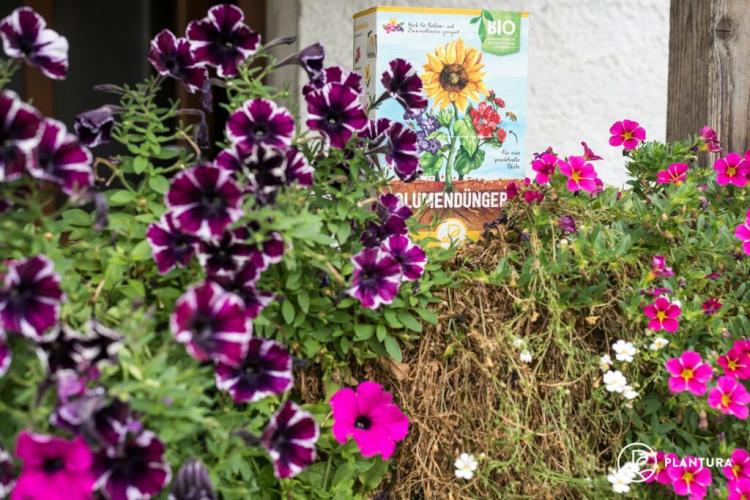
Our Plantura organic flower fertilizer with organic long-term effects is ideal for supplying your petunias with nutrients
Long-term organic fertilization: Instructions & dosage amounts for petunias
- When planting in the bed, lightly work about 100 – 150 g / m² (8 to 12 heaped tablespoons) of our Plantura organic flower fertilizer into the top soil layers
- Pour freshly placed petunias well so that the granules can loosen
- After 2 months, re-fertilize 80 – 120 g / m² (6 to 10 heaped tablespoons)
- When cultivating in a pot, fertilize about 4 to 6 g per liter (1 to 2 teaspoons) when planting, after 2 months again fertilize about 4 g per liter
Mineral fertilize petunias
Blue grain, liquid fertilizers & Co. are still popularly used by hobby gardeners as universal means in the garden. The nutrients are in pure form in mineral fertilizers and are therefore directly available to the plant. The fertilizing effect is usually only of short duration. In addition, due to the simple solubility of the nutrient salts, there is an increased risk of over-fertilization. If used improperly, these can even be washed out into deeper soil layers, where they lead to contamination in the groundwater. Primarily organic fertilizers work much more slowly, as they first have to be broken down by the microorganisms in the soil, but they are much gentler on the environment and promote the development of your petunias in a more sustainable manner.
Fertilize petunias with home remedies
An ideal care addition for petunias, which occur in almost every household, is a fertilizer made from coffee grounds. Because the actual waste product contains vital plant nutrients such as nitrogen, phosphorus and potassium. The introduction of organic material also improves the soil structure and attracts useful soil organisms that loosen the soil and make it permeable.
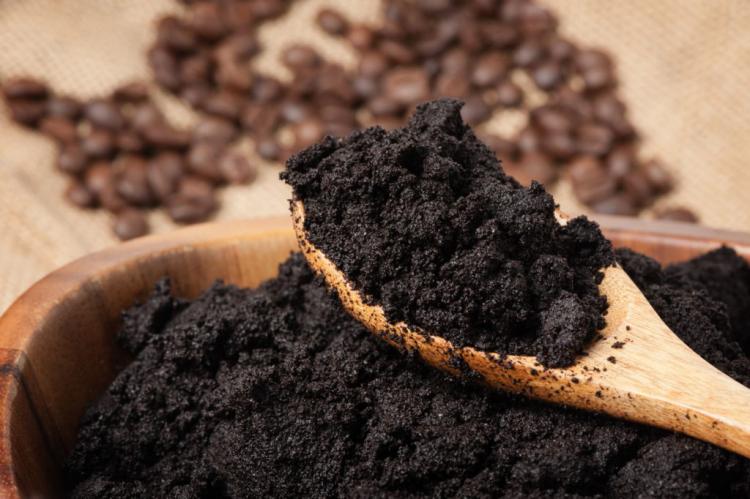
As an acidic natural fertilizer, coffee grounds are ideal for petunias [Photo: Nor Gal / Shutterstock.com]
Sour coffee grounds are also ideal for petunias because they lower the pH value in the soil or in the substrate. Whether for bedding or potted plants, coffee grounds as fertilizer are very easy to use. It is best to dry the brew first so that there is no mold formation. Then occasionally (every few months) sprinkle some of the powder around the plant and work it lightly into the soil. You can also dilute smaller amounts with plenty of water and administer them with the irrigation water. Only fertilizing with coffee grounds is not recommended; it is best to add a primarily organic fertilizer to meet the petunias’ high nutritional requirements.
If you fall into the tea drinker category, you can also use green tea to fertilize your petunias. In contrast to coffee grounds, tea contains a lot of iron and is therefore ideal for the regular fertilization of petunias. You can easily prepare a strong green tea and let it cool down. Then dilute it with water and water the plant with it. You can also use the tea leaves. The best thing to do is to dry it off and mix it under the ground from time to time. Gradually it is then broken down by the soil organisms and releases the nutrients it contains for the petunia.
Fertilizing petunias in the pot: you should pay attention to this
Petunias are not only beautiful to look at in the garden bed, but are also wonderfully suitable for planting in a pot. Hanging varieties, for example, decorate balcony boxes or hanging baskets. But petunias also come into their own in boxes, barrels or troughs. Simply fill the selected planter with nutrient-rich bedding or balcony potting soil. If necessary, you can also mix in some bog soil to ensure a lower pH value. If you are willing to take something in your hand and have more money, you can also use special iron-containing petunia soil from specialist shops. In order to avoid nutrient competition, however, you should always make sure to choose a sufficiently large planter and not to plant too many plants in one pot. A maximum of five petunias should be placed in a large balcony box and a maximum of two to three petunias in hanging baskets.

Petunias also look great when planted in pots [Photo: Sia Sia / Shutterstock.com]
So that the freshly placed petunias can grow well, it is advisable to incorporate a fertilizer with organic long-term effects – such as our Plantura organic flower fertilizer – into the substrate when planting. Since the nutrient uptake is limited by the pot volume, it should also be fertilized regularly. If you water with hard, lime-rich tap water, special care must be taken to ensure that the petunia always has enough iron available. Special iron and petunia fertilizers are commercially available, for example, which can be administered via the irrigation water or as foliar fertilization. To counteract a deficiency, you should also repot your petunias annually and replace the substrate.
In this special article, we have summarized what else you need to consider when caring for petunias.

